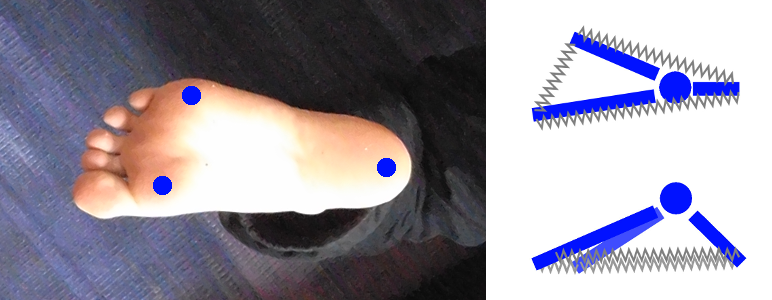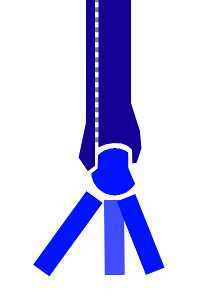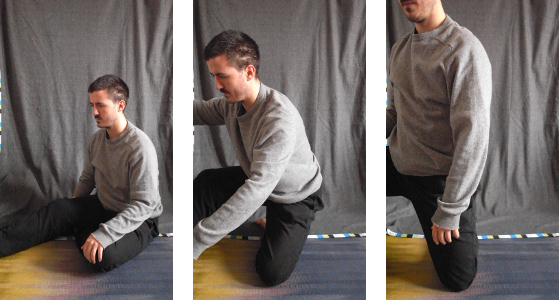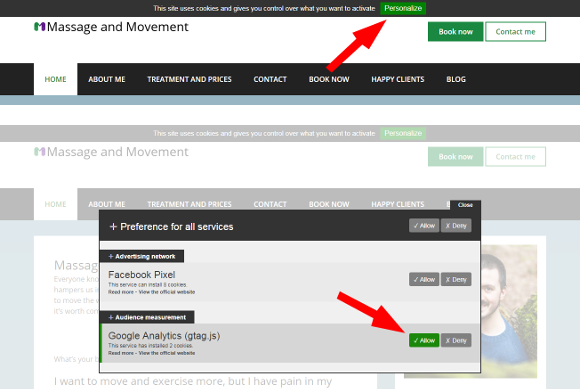Walking is such a complex enterprise involving so many parts of our body, that we never run out of ways to improve and optimise it. Today we’ll look at a few images to take full advantage of the elasticity of the tissue in and around our feet. These images can be used independently or combined, and work great for jumping or any other activity where your feet propel you.
First image – inside the foot
The first image I want to present deals with the internal structure of the foot. Obviously an extremely simplified version (an overview of anatomy reveals that a human foot contains 26 bones, 33 joints and more than a hundred muscles), but still accurate enough to be useful. We will see our foot as a tripod. The top of our tripod is the talus, the bone on which the rest of the body rests, and the legs of the tripod are imaginary rods extending to the heel, the base of the big toe, and the base of the little toe, respectively. These legs are linked by springs, so that if we press on the tripod, its legs spread a bit, and they spring back into place when the force we apply diminishes.
Try and picture this tripod inside your foot, and go for a small walk; run a bit; jump over things, or onto things, or down from things. How do your feet feel, how does it feel when you “take off” for your jump? How do the landings feel?
Second image – foot and lower leg
This image deals with the structures that link the foot to the rest of the leg. So let’s imagine the top of the talus, the top of our foot/tripod, as a half wheel, and the bottom of our lower leg (tibia and fibula) as a “pincer” gliding on top of this leg, gently grasping it (this is actually very close to the exact anatomy). For this image, we can just think of the bones of our lower leg as a vertical rod. Now we will imagine that there are springs attached to this rod, and going to the “heel” and “big toe” legs of the tripod.
When you walk, here is some of the things that will happen with this image: on heel strike, the front spring will slow the foot down and smooth its contact with the floor, and lengthen, giving fore back when the leg goes over the foot. You can think of your step being powered by this passive spring.
During this “transfer” phase, the back spring will lengthen, and give force back by pushing your back foot off the floor.
Walk for a while with these images in mind. How does your walking feel? How tired are you compared to a usual walk of a similar length?
Bonus image – inside the shin
Lastly, let’s consider a slightly more advanced image, to do with the relationship between the tibia, the fibula, and the talus. I already described their shape and configuration earlier, but I now have to add a detail: the half-wheel on top of the talus is wider at the front. Now comes the image: there are springs (or an elastic sheet) between the tibia and the fibula, drawing them towards each other.
As your shin goes forward and glides on top of the wheel-talus, the tibia and fibula grow apart, storing energy in these springs, which will the propel the foot towards a more pointed position when the load reduces, for instance and the end of a step or when you jump.
If and when you’re familiar with these images, try to combine them. How do these spring systems work together to make your walking, jumping, running, dancing… more efficient, more effortless?
Details and anatomy bits
A note for the more anatomy minded of my readers: these springs are not in fact the muscles, but the tendons and fascia around said muscles. I won’t go into the details of why these images are actually very close to anatomically correct because the science is a bit too involved for the scope of this blog, but if you’re interested, read James Earl’s Born to Walk.
That’s it for today, I hope your walking gets smooth and effortless!
Continue reading: Imagery For Ankle Mobility, Walkin Imagery: Back Line of the Leg, 5 Daily Opportunities To Perfect Your Posture.
Want more like this?
Check out the following blogs from massage therapists I know from around London:- On The Run Health and Fitness on running, nutrition and sports massage.
- The Soma Room on sports massage and exercise.









No Responses